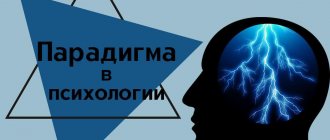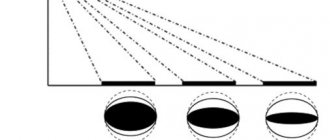Concept and structure
Self-concept is a system of psychological attitudes of an individual that relate to himself. It is formed and develops as one grows up and develops as an individual in society.
The processes of self-knowledge are influenced by many factors. Some of them are changed by a person himself, others do not depend on him.
Considering the structure of the self-concept, psychologists distinguish three components - cognitive, evaluative, and behavioral. Each of them covers different areas of self-esteem.
Cognitive
The cognitive component of the self-concept is a set of beliefs that can be true or deceptive.
Understanding beliefs in more detail, we can say that they have different significance
For example, a person considers himself brave, pays special attention to this, but at the same time does not think at all about his strength. The hierarchy of beliefs itself is not constant
It can change with the stages of growing up, the influence of society, and social status.
Estimated
Each person constantly evaluates his characteristics. Estimates are formed under the influence of several factors:
- determining the effectiveness of one’s own activities;
- comparison of current social status;
- comparison of the idea of the ideal self.
Behavioral
The behavioral component of the self-concept is an objective opinion about oneself. A person cannot deny his behavior, words, actions, mistakes.
Category in psychology
Definition 1
Psychological categories are a generalized concept that reveals the content of the subject of psychology research.
Each scientific course has its own categorical apparatus and fundamental category. For the psychology of consciousness, this is a category of consciousness. For behaviorism, it is a category of action. In Gestalt psychology it is a category of image. In Freudianism, the key category was the category of motive.
The categories present the working principles of thought, its meaningful forms that form the course of study. The categorical apparatus of psychology forms the “framework” of the mechanism for “manufacturing” facts and theories of psychology. The categorical apparatus is not static. The categorical apparatus of psychology is constantly being improved.
Are you an expert in this subject area? We invite you to become the author of the Directory Working Conditions
Note 1
In modern psychology, there are main categories, such as the category of reflection, the category of activity, the category of personality, the category of motive and others.
Why is creating an image of yourself difficult and pointless?
Because your self-image does not match reality. Neither old nor new.
Let's take my example. Four years ago I moved to the Caribbean. I simply squealed with delight and uploaded dozens of photos to Facebook with the sea, palm trees and coconuts. I wrote posts about how cool it was, and condescendingly pitied those who were sitting in dull winter cities. I was sure that I had finally found the perfect place to live. I diligently maintained the belief that living in the Caribbean was cool; I tried to communicate with people who share this belief; I have built my whole life around this fact. In general: I created for myself the image of Andrey-who-lives-in-the-Caribbean.
And what do you think I did when I got tired of drinking coconuts, eating bananas and walking from the bungalow to the beach and back all day? That's right: nothing. Because doing anything would mean destroying the image of Andrey-who-lives-in-the-Caribbean. Despite the fact that I really no longer wanted to live in the Caribbean, at first I forced myself to live there, and then I simply fell into apathy and did not want to live anywhere else.
What should I have done (and what did I end up doing)? Just get off your ass and go somewhere. Instead, I tried to create a new image of myself. I thought that before I went anywhere, I needed to decide
: Am I, damn it, Andrey-who-lives-in-the-Caribbean or Andrey-who-no longer-lives-in-the-Caribbean?
In the end, I spat and said to myself: to hell with it, I’ll sort it out later. And bought tickets. And guess what? This was my best decision in these four years.
Formation mechanism
The mechanisms for the formation of self-psychology were proposed by I. S. Kon:
- Social comparison. When a system of criteria for self-esteem is formed, people begin to compare themselves with others. This process is called social comparison.
- Mirror reflection. A person forms an idea of himself based on the reaction to himself from others. From birth, an individual has no criteria for evaluating himself. She borrows them from other people and forms her own system.
- Self-verification, self-presentation. When a person has formed the initial image of his Self, he conducts a superficial check of the compiled image. To do this, he considers other people's assessments of himself.
- Hierarchization. The core of the self-concept consists of those qualities, properties, elements that are most important for the individual.
- Self-attribution. When a person forms an idea of himself, he receives information by observing his behavior, analyzing feelings, and studying the circumstances that influence behavior.
- Meaningful integration.
If you study the plane of the self-concept, you can identify a number of levels of its formation. They are relevant if all the content components of the structure interact. Levels of formation:
- aharmonious;
- disharmonious;
- mixed;
- optimal;
- harmonious.
As a person grows up, self-images become multi-component and differentiated. The first prerequisites for the formation of the self-concept appear already in infants. The child learns to divide sensations into his own, which manifest themselves from his personal activity, and external ones, which do not depend on him.
Activity category
Activity is a form of active relationship to reality, through which the real connection between a person and the world that surrounds him is determined.
This category defines two provisions:
- position on the unity of activity and psyche;
- turning to activity as a driving force in the formation of the psyche.
As an explanatory principle of the psyche, the category of activity is used in the study of various spheres of mental reality (mental processes of a cognitive nature) motivation, emotions, personality, intragroup processes.
Note 2
Reflection is copying, the formation of a realistic world. Activity is that activity that is subordinate to a conscious goal.
Emotional all-in
All-in is a poker term that refers to a situation where a player bets all of his chips. In Russian this is also called all-in. Most often this happens when the player is sure that he has the best combination of all possible in a given situation (we will not now consider the subtleties of strategy and cases of bluffing).
But sometimes (usually in online games) you can observe players who - most often, after another loss - begin to go all-in with every hand, regardless of what cards they were dealt. Practice shows that, despite the fact that such tactics sometimes allow not only to win back what they lost, but also to win several times more than the original, this story always ends the same: such players lose everything to the last chip. Always. With no exceptions.
And the same thing happens with your self-image. When you create an image of yourself, you put your emotions into it. In other words, you are making a huge emotional investment in living up to this image. Every time you need to do something that affects your self-image, you go all-in. The problem is that your self-image usually includes everything you do more or less constantly. It includes where you live, your work and your hobbies, your habits and social connections. And so you act like that crazy poker player. And you get the same result: frustration, anger and the acrid bitterness of disappointment.
You're out of chips. Make room at the table, please.
Approaches to understanding the category of image in psychology
Polishchuk Elena Anatolevna,
postgraduate student, assistant at the department of humanities and socio-economic disciplines, Vladivostok State University of Economics and Service.
At the end of the 19th century, the development of psychology as a science began. For the first time in the psychological arena, the category of image appears within the framework of structuralism. The founder of this direction, Wilhelm Wundt, considers the processes of consciousness as a subject of psychology as the structural unity of its main elements. The main research method is introspection, which deals with the direct experience of the subject’s visual perception of individual properties of reality. W. Wundt himself does not resort to the analysis of images: the elements of consciousness he identified are sensations and feelings. However, the methodological foundations laid by W. Wundt allowed his student Eduard Titchener to make images one of the subjects of his study [1].
According to the representative of experimental psychology E. Titchener, “images are elements of ideas and reflect experiences that are not associated with the current moment - for example, those occurring in our memory” [2]. Images have four main characteristics: quality, intensity, duration, and clarity.
Thus, E. Titchener considers images as one of the elements of consciousness, the main task of which is to represent the phenomena of internal reality (“memories of experiences”) in the structure of consciousness. In scientific terms, the merit of E. Titchener is that images within the framework of psychology for the first time receive theoretical understanding and, still indirectly, become the object of research.
Almost at the same time, independently of E. Titchener, Francis Galton began to study mental images. Working on the creation of his theory of mental heredity, he puts forward a hypothesis about the hereditary similarity of imagination processes. To prove this, he turns to the study of the laws of association of ideas, which, in his opinion, are based on mental images. Subsequently, some principles of studying images, used by F. Galton, formed the basis for studying the figurative sphere within the framework of the cognitive direction [3].
Perhaps the category of image received the most comprehensive scientific development thanks to the psychoanalytic direction. Exploring the nature of the unconscious and its role in mental development, Sigmund Freud turns to the analysis of mental images. Z. Freud, as a representative of psychoanalysis, considers images as a reproduction in the mind of instincts and drives. In his understanding, mental images connect a person not with objective reality, but with the inner world, reflecting its undercurrents and collisions.
The meaning of an image as a manifestation of the unconscious is studied by the method of free association and the method of dream analysis, in which working with images is the main way and, in fact, the only opportunity to track the manifestations of the unconscious in the mental life of an individual.
S. Freud places images in the area between two separate mental systems – the conscious and the unconscious, thereby continuing the idea “...an image is a bridge between two pairs of opposites...” [4]. In psychoanalysis, the category of image appears as a translator of the distorted realities of reality presented in the inner (unconscious) world of a person.
Download cs server
ks servers 1 6
myarena.ru
Research into the category of image continues in the studies of Carl Gustav Jung. Unlike Z. Freud, who views images as mental copies of instincts and drives, K.G. Jung presents images as primary active phenomena of mental life. According to the ideas of K.G. Jung, the ability of the psyche to create images gives a person the opportunity to experience reality, since “we directly live exclusively in the world of images” [5]. Images from K.G. Jung is not just a representation, but a phenomenon that performs an active, creative function.
Analysis of the image category by K.G. Jung is directly related to the key concept of archetype. Developing S. Freud's ideas about the nature and functions of the unconscious, K.G. Jung distinguishes two levels in the sphere of the unconscious: superficial - the personal unconscious and deep - the collective unconscious. The collective part of the unconscious “...is not individual, but universal; Unlike the personal soul, it contains the content and modes of behavior that are present everywhere and in all people... and constitute a single mental substrate of a transpersonal nature that is present in each of us...” [6]. The components of the collective unconscious are therefore archetypes, as the definition of the collective unconscious, recognized in our experience and manifested, as a rule, in images.
In the middle of the 20th century, a new direction in psychological science emerged - cognitivism, the subject of which is the organization and functioning of internal thought processes (the process of information processing). An image is understood as “...a representation in the mind of an object or event that is not present...” [7]. The main task of the image is to preserve events and phenomena of reality in memory in the form of some picture in the head, a projection of scenes from the real world [6]. Considered within the framework of the problem of storing and reproducing information, the category of image receives a new theoretical understanding (J.S. Bruner, J. Kelly, A. Bandura, L. Kohlberg, J. Piaget, etc.).
The category of image receives broad theoretical understanding within the framework of Russian psychology and is included in the category of metacategories [8]. Historically, this is due to the fact that in the 1930s consciousness became the subject of Russian psychology. At the same time, there is a revision of the methodological foundations of all psychology: dialectical materialism becomes its foundation. Since 1931, psychology in Russia is “the science of the psyche, consciousness as a property of the brain, which is a reflection of objective reality” [8]. Based on this, the main function of the psyche is the reflection in the consciousness of objects and phenomena of the objective world in the form of a mental image, which makes it possible to expediently regulate the activity of the subject [9].
In the middle of the 20th century, a broad theoretical and practical study of the image as a psychological phenomenon began. Such scientists-psychologists as S.L. Rubinshtein, A.N. Leontyev, P.Ya. Galperin B.G. Ananyev, N.A. Bernshtein, L.M. Vekker turn to the study of the problem of image to one degree or another. , L.S. Vygotsky, V.P. Zinchenko, S.D. Smirnov and others.
P.Ya. Halperin writes: “Let us agree to call all mental reflections in which objects and relations of the objective world are revealed to the subject as images” [10].
The main thing that connects the image and the original (the phenomenon of reality), according to the theory of reflection by P.Ya. Halperin is a relation of reflection, thanks to which reality is presented in the consciousness of the subject. However, the question of what kind of reflection (“integral” or “all, every” - P.Ya. Galperin) forms the image is resolved differently. The solution to this issue in Russian psychology is fundamental, since it will reveal the specifics of understanding the image.
The ability of the psyche to reflect reality covers all levels of mental organization: from sensory-perceptual to intellectual and, more broadly, the level of consciousness. Each level of reflection corresponds to a specific image that performs certain functions in the mental organization of a person [11].
One of the first to study sensory-perceptual images obtained in the process of perception. (B.F. Lomov, L.M. Wekker, etc.) The main characteristic of sensory-perceptual reflection is that it arises from the direct impact of objects and their properties on the human senses and is realized in real time. The emerging sensory-perceptual image acts as “imposed on our mind from the outside” (I.M. Sechenov) [12].
Since a perceptual image arises from the direct impact of a stimulus on the sense organs, it is called a “sensory image” [12].
According to the Soviet psychologist B.F. Lomov, “the reproduction of an image in mental space occurs due to the spatial development of the temporal sequence of perception of the elements of an object” [13]. In this case, the temporal components - duration and sequence - turn into spatial ones - length and area.
From this point of view, the image represents the relationship between the external and internal world, a means through which the characteristics of reality (time, sequence, etc.) flow into the characteristics of the internal mental space, giving rise to it.
Perceptual images are the basis for the emergence of images that are more complex in their structure and functions. These include the so-called secondary images (idea, memory images, imagination images). The main characteristic of secondary images is that they are formed without the direct influence of objects in the real world, but through the operationalization and transformation of sensory images stored in memory. In this case, the structure of the object image can be changed.
The work of a number of psychologists (V.A. Barabanshchikov, A.A. Gostev, A.N. Leontiev, S.D. Smirnov, etc.) is devoted to the study of the integral image of reality [14].
The most significant contribution to the study of this problem was the recent work of A. N. Leontiev, in which he develops a unified concept of the Image of the World, “which is an individual, holistic subjective picture of the world around him, mediated by mental reflection” [13].
The image of the world is built on the basis of sensory images, which, penetrating into the sphere of consciousness, are transformed, acquiring new characteristics.
Analyzing the image in the context of the sphere of consciousness, A.N. Leontyev identifies its active, activity-based function as the main characteristic of the image. Developing this idea, P.Ya. Galperin believes that images are a prerequisite for the transition to a non-automatic (i.e., conscious) response [10]. Thanks to images, “the world around us opens up as an arena of possible actions” [10].
The development of the concept of “image of the world” was continued by S.D. Smirnov. He understands the image of the world as a certain aggregate or ordered system of a person’s knowledge about the world, about himself, about other people, etc., which mediates and refracts through itself any external influence.
Thus, approaches to understanding the category of image in psychology are very different. Within the framework of the psychoanalytic direction, the image for the first time becomes the subject of deep theoretical understanding. Representatives of the cognitivist approach analyze mental images in the context of the fundamental question for this direction about the principles and mechanisms of storing and reproducing information in memory. From this point of view, the image is one of the main ways (codes) of storing information. The image serves as a mediator, a link between the inner world and the world of external objects, facilitating the construction of associative connections and organizing information stored in memory.
In the concepts of domestic scientists, the image appears as a phenomenon that generates and describes mental reality. Considered in the context of the theory of reflection, the image, on the one hand, allows us to see the specifics of the reflection process at various levels of a person’s mental organization. From another position of study, an image placed in the space of consciousness is an integral product of human interaction with the real world, revealing the main functions of the psyche, its active activity principle.
Literature
1. Wundt V. Introduction to psychology / V. Wundt. – Publisher: KomKniga, 2001. – 167 p.
2. Shultz D.P. History of modern psychology / D.P. Schultz, S.E. Schultz; lane from English A.V. Govorunov, V.I. Kuzin, L.L. Tsaruk; edited by HELL. Nasledov. – St. Petersburg: Publishing House “Eurasia”, 2002. – 532 p.
3. Nartova-Bochaver S.K. Differential psychology / S.K. Nartova-Bochaver. – M.: Flinta, 2008. – 280 p.
4. Freud Z. Psychology of the unconscious / Z. Freud. – St. Petersburg: Peter, 2007. – 400 p.
5. Jung K.G. Problems of the soul of our time / K.G. Jung. - St. Petersburg: Peter, 2002. - 352 p.
6. Jung K.G. Alchemy of dreams / K.G. Jung. - St. Petersburg, 1997. - 351 p.
7. Solso R. Cognitive psychology / R. Solso. – St. Petersburg: Peter, 2006. – 589 p.
8. Petrovsky A.V. History of Soviet psychology. - M.: Education, 1967. - 368 p.
9. Reber A. Large explanatory psychological dictionary: in 2 volumes, T.1 / A. Reber; lane from English Chebotareva E.Yu. – VECHE Publishing House, 2003.
10. Galperin P.Ya. Introduction to psychology / P.Ya. Galperin. – M.: Direct-Media, 2008. – 275 p.
11. Gostev A.A. The imaginative sphere of man / A.A. Gostev. - M., 1992.
12. Wekker L.M. Psyche and reality: a unified theory of mental processes / L.M. Wecker. – M.: Smysl, 1998.
13. Berezina T.N. Spatiotemporal characteristics of mental images and their connection with personality characteristics / T.N. Berezina // Psychological Journal. – 1998 – No. 4. – P.13-26.
14. Leontyev A.N. Selected psychological works: in 2 volumes, Volume 2 / A.N. Leontyev. – M., 1983.
Received by the editor on April 29, 2010.
You are not attached to anything other than your image of yourself.
If we return to my example, then in reality there was no Andrey-who-lives-in-the-Caribbean. There was Andrey, who chose to live in the Caribbean. To be more precise, there was Andrey, who every day chose not to do anything regarding changing his place of residence, because one day he told himself that he had already found the ideal place to live.
I was not tied to my place of residence. I was attached to my image of myself. And it didn't allow me to change my daily choices.
When I stopped trying to define my self-image, everything turned out to be very simple. Yes, there was a lot to do, but I had fun doing it. I even enjoyed the ten-hour flight across the Atlantic.
Perhaps you are now thinking that it’s good for me to talk, and that I’m already tired of my Caribbean. That’s the man’s problem: he’s fucking tired of the Caribbean!
In fact, I could tell you about how I stepped on the same rake with work, hobbies, relationships, daily routine and nutrition. But I deliberately chose the Caribbean example precisely because I know that many people dream of quitting their jobs and moving to the tropics; because I know how cool it is
it may look like part of the image.
And also because it was almost the biggest emotional all-in of my life. And it ended with a prolonged depression for me. This is how it works: the more emotion you put into your self-image, the stronger the emotional charge. And this charge will eventually hit you in the forehead. And it will hurt.
Motive category
The motive is:
- an ideal or material “object” that stimulates and directs an action or activity;
- mental image of a given object.
In a broad sense, it is something inside the subject that prompts him to action, the meaning of his actions comprehended by a person. With the help of a motive, a person’s behavior, his goals, value orientations, and decision-making mechanisms can be reflected.
The psychological functions of motives consist of inducing activity, giving direction to the activity being performed, and creating meaning.
The optimal level of achievement motivation contains the predominance of the subject's interest in the activity in the structure of motivation, which is accompanied by pleasure from its implementation, as well as a sense of control and competence.
History of the study and researchers
Even ancient scientists tried to understand how a person imagines himself, evaluates his actions, and what factors he pays attention to. Numerous attempts to find answers to these questions have not yielded significant results.
The independent concept of self-concept began to take shape in the 19th century. Then scientists began to debate about the dual nature of man. The first scientist to contribute to the development of the self-concept was William James. The psychologist daily observed his actions, feelings, experiences, described changes, and asked others about himself.
Gradually, the relevance of the issue faded, but by 1950 the excitement around the self-concept flared up again. Abraham Maslow and Carl Rogers studied the position of one's own self as part of the process of personality formation.
30 years later, Soviet researchers became interested in the concept. They made a significant contribution to the development of this area.
Daily Activities Selection
Looking back on my entire life, I understand that all my successful endeavors (in a broad sense) developed from the fact that I simply decided to try to do something.
I never intended to become a website developer. It’s just that at some point I became interested in how websites work, and I wanted to try to make my own (and, believe me, my first twenty websites were terrible). I never intended to become a sales business owner. I just saw a niche in an area that was interesting to me, in which there was no quality service, and I wanted to try to create a convenient platform (and in the first month I earned $4). And so on.
And, interestingly, when I studied the biographies of people whose life stories inspire me, I saw the same thing there: they all just decided to try to do something.
And it almost always started with something small.
The habit of thinking in terms of “self-image” makes you want to get everything at once. Quit your job and start making millions from your hobby. Leave your Mukhosransk and live in a villa in Miami. In general, change your life instantly and radically.
I'll disappoint you: you can't do this.
But you can start making daily choices in favor of those activities that interest you. You can start practicing your hobby daily in parallel
with work instead of self-flagellation about the inability to change the image of myself-who-does-hate-work to the image of myself-who-is-loved-thing. This will bring much more benefits. And who knows what will come of it after some time? Maybe nothing - but at least you will be doing something that brings you pleasure.
Don't think about whether this or that action corresponds to this or that self-image. Ask yourself, is this something you would be interested in trying? If yes, do it. If not, don't do it. And finally stop considering this action or lack thereof to somehow define you.
Just do it.










